Spanakopita is a delightful and iconic dish that is an essential part of Greek cuisine. If you’re wondering how to make traditional Greek spanakopita, you’re in for a treat.
This delectable savory pastry, filled with a mixture of spinach and feta cheese, is a staple in Greek households and holds a special place in the hearts of many worldwide. From Greece, spanakopita has a long and rich history reflecting Mediterranean culture.
The dish showcases the importance of fresh ingredients and simple yet flavorful combinations. Its roots can be traced back to ancient times when the Greeks emphasized using spinach due to its abundant availability and nutritional value.
The combination of the earthy spinach, tangy feta cheese, and flaky phyllo pastry creates a harmonious balance that is hard to resist. The appeal of spanakopita lies in its versatility; it can be served as a main course, appetizer, or even a snack. Whether it’s enjoyed warm or at room temperature, this dish is sure to tantalize your taste buds and transport you to the sun-soaked shores of Greece.
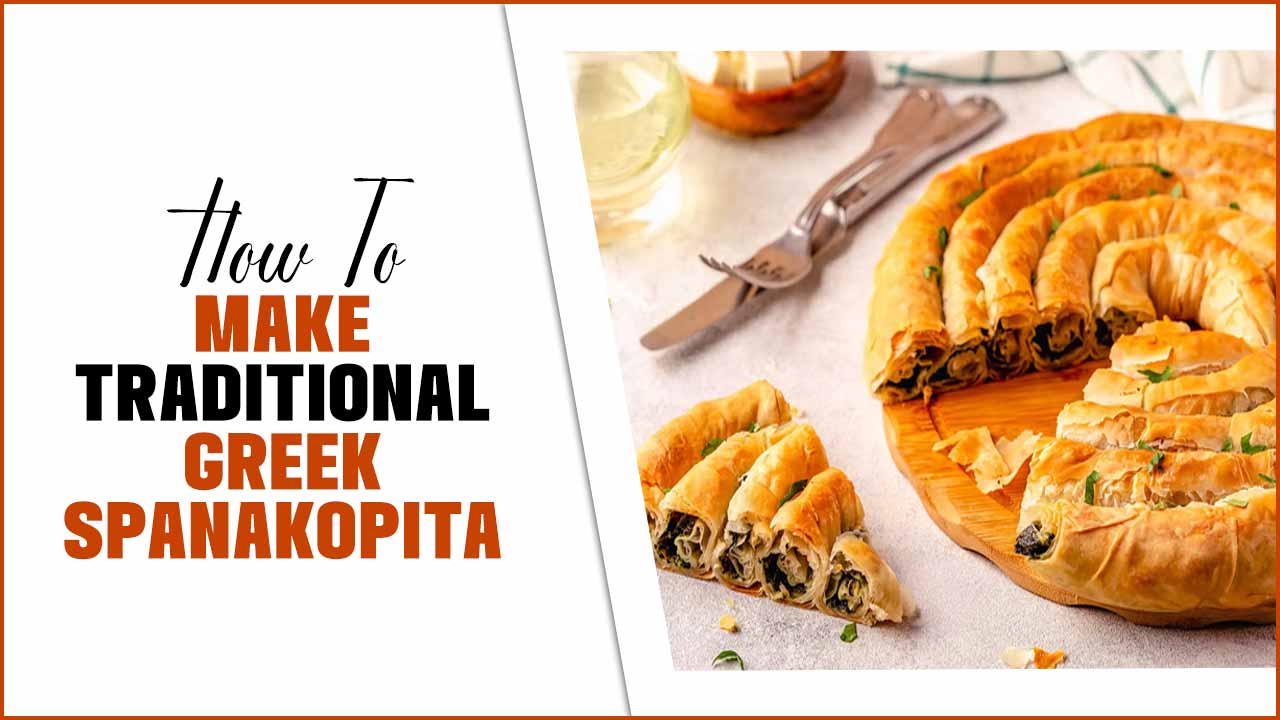
The History And Cultural Significance Of Spanakopita In Greece
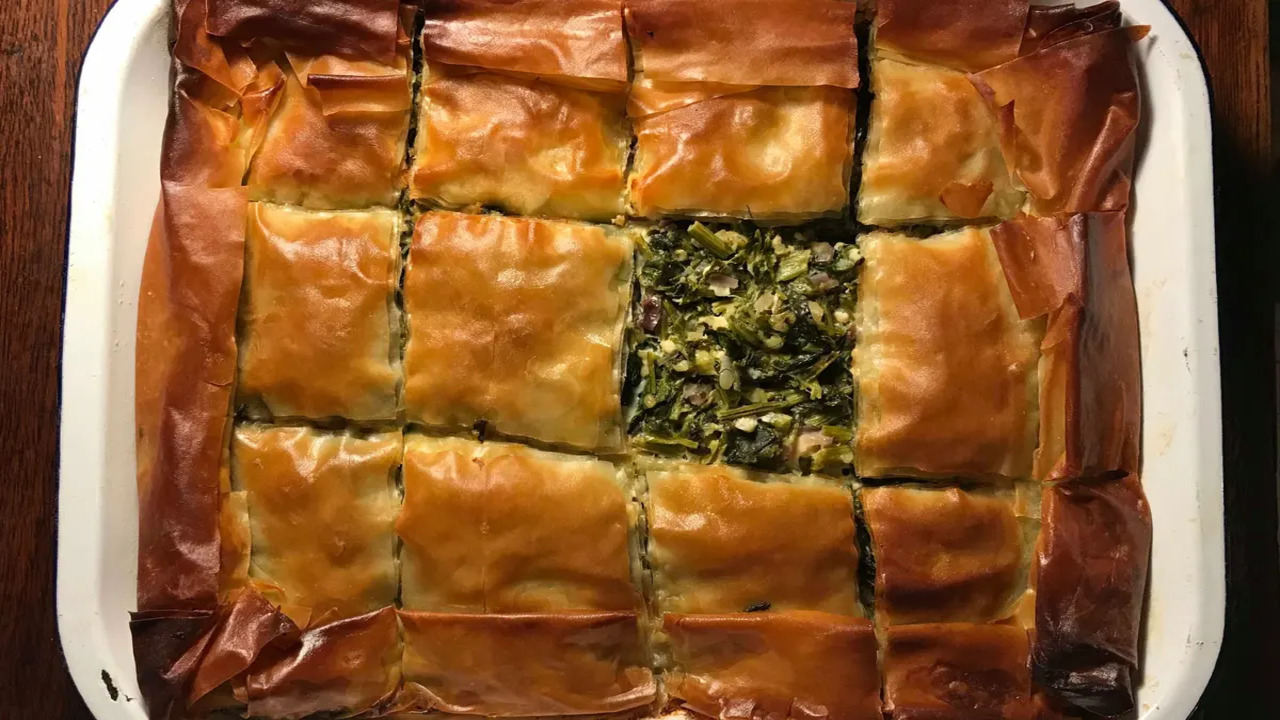
Spanakopita is a savory Greek pastry made with spinach and feta cheese filling, layered between filo pastry sheets. It has a long history and is a staple in Greek cuisine. The dish is believed to have originated in the Greek city of Istanbul during the Ottoman Empire and was brought back to Greece by Greek refugees.
Spanakopita is commonly served as an appetizer or snack but can also be a main course. People often enjoy it during special occasions, such as weddings or Easter.
Ingredients Needed To Make Greek Spanakopita
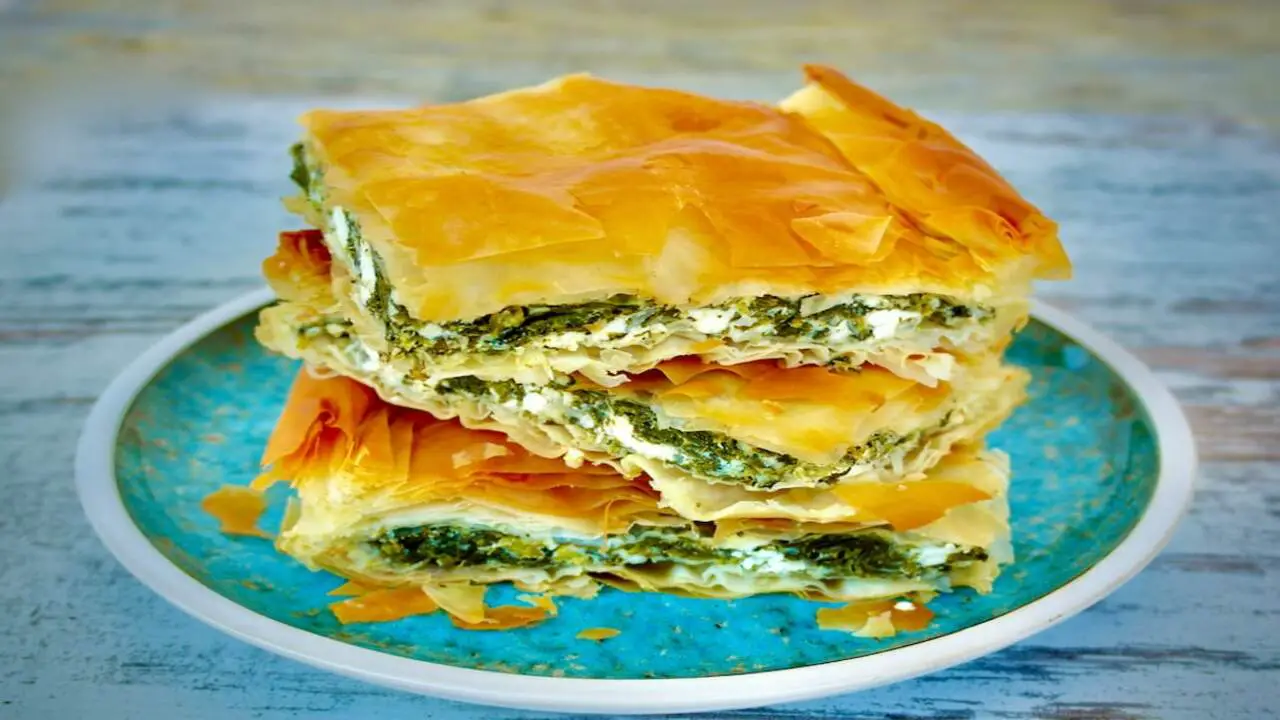
Greek Spanakopita is a savory pastry dish that is popular in Greek cuisine. Ingredients play a vital role in creating a delicious and visually appealing dish, so using high-quality, fresh ingredients and measuring them carefully is essential. Spanakopita is a delicious and nutritious dish that is perfect for any occasion. To make Greek spanakopita, you will need the ingredients:
- Phyllo Pastry Sheets: Thin, delicate sheets of pastry dough that provide the flaky layers in spanakopita.
- Spinach: Fresh or frozen spinach leaves, typically chopped or wilted, are the star ingredient of this dish.
- Feta Cheese: A tangy and crumbly cheese that adds a distinctive flavor to the filling.
- Onion: Finely chopped onion adds aromatic depth to the filling mixture.
- Garlic: Minced garlic cloves enhance the savory taste of the spanakopita.
- Olive Oil: Used for sautéing the onions, garlic, and spinach, as well as brushing the phyllo pastry layers.
- Eggs: Beaten eggs act as a binding agent for the filling.
- Dill (optional): Fresh dill, chopped finely, can be added to elevate the flavors.
- Salt and Pepper: Seasonings that enhance the overall taste of the dish.
- Butter (optional): Melted butter can be brushed on top of the phyllo pastry for added richness.
How To Make Traditional Greek Spanakopita – Step By Step
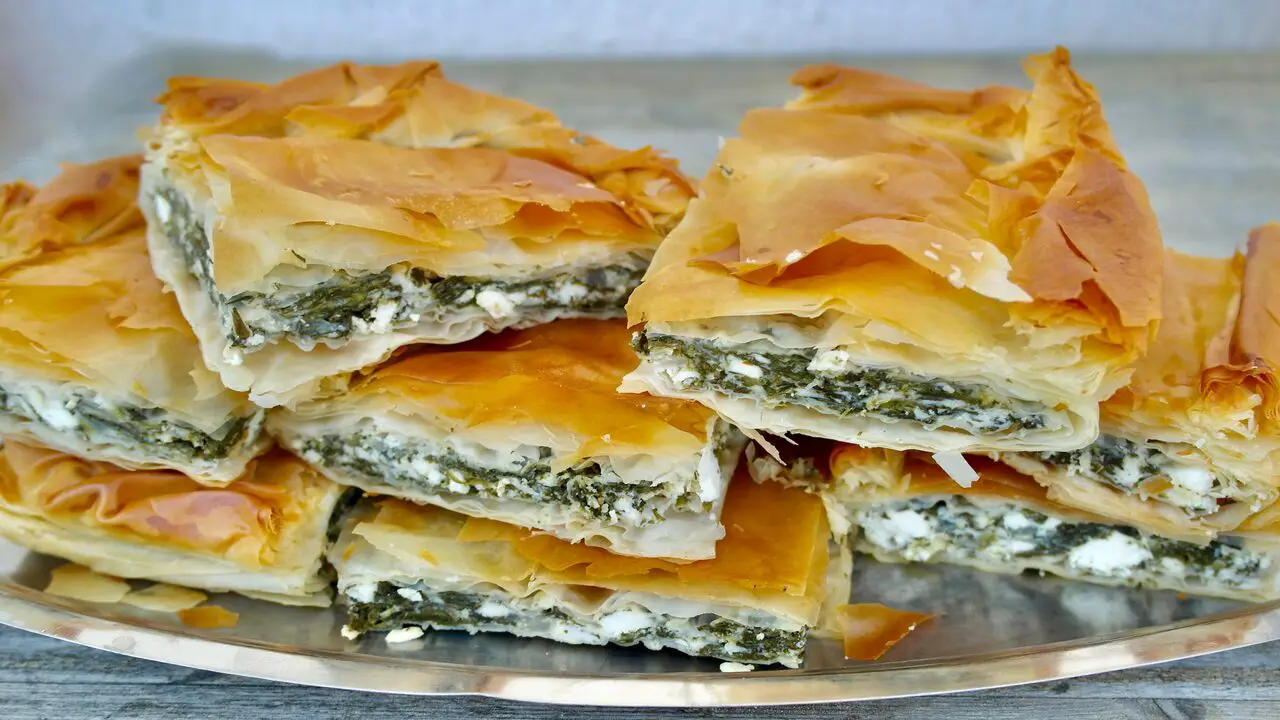
Spanakopita is a traditional Greek dish that is easy to make and full of healthy ingredients. Spanakopita is not only delicious but also a great source of iron and calcium from spinach and feta cheese. By learning how to make traditional Greek spanakopita, you not only explore the delicious flavors of Greece but also honor the culinary traditions that have been passed down through time.
1.Preparing The Filling And Cleaning And Chopping Spinach Leaves.
Cleaning and chopping spinach leaves is an important step in preparing Greek Spanakopita. Start by washing the leaves thoroughly to remove any dirt or impurities. Trim the stems if desired and chop the leaves into smaller pieces. This ensures you can evenly distribute the spinach throughout the filling, providing a delicious and nutritious component.
2.Preparing Feta Cheese For The Filling
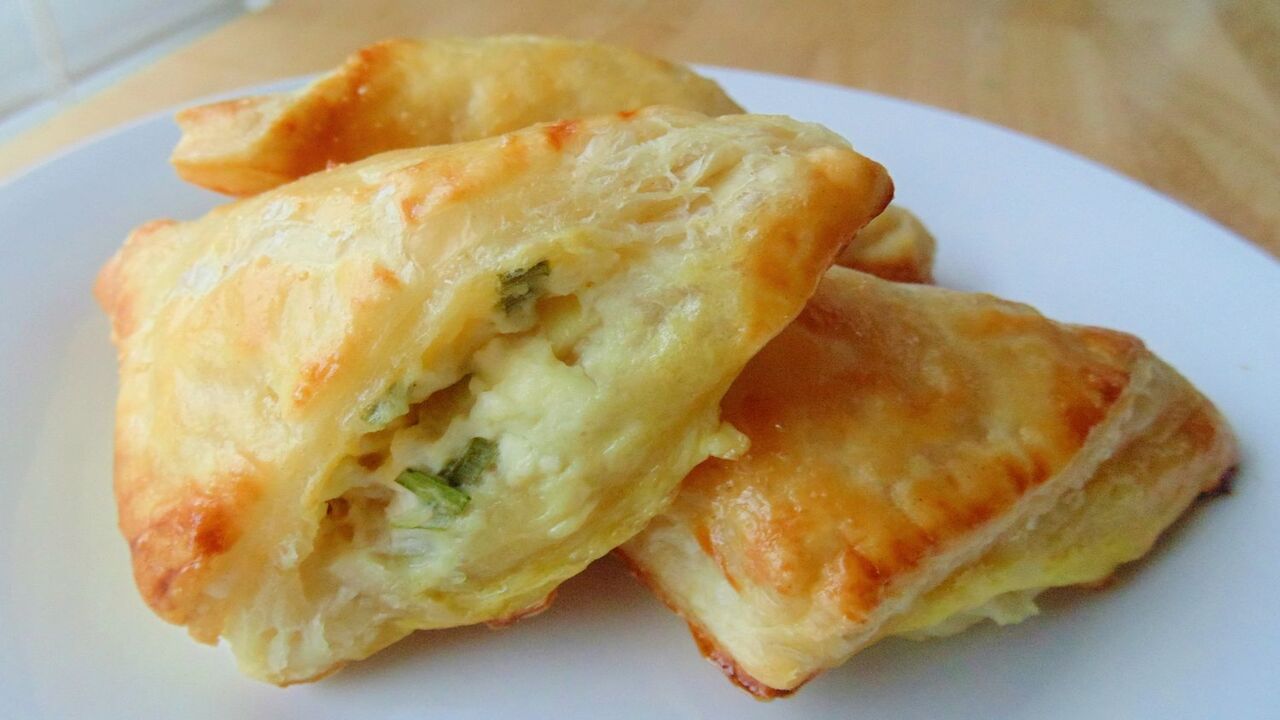
Feta cheese adds a rich and tangy flavor to the Greek Spanakopita filling. To prepare it, crumble the feta cheese into small pieces. You can do this using a fork or your hands. Remove excess liquid from the cheese before adding it to the filling mixture.
The creamy and salty nature of feta cheese complements the spinach and other ingredients, enhancing the dish’s overall taste.
3.Adding Onions And Herbs To The Filling Mixture:
Onions and herbs play a crucial role in enhancing the flavor profile of Greek Spanakopita. Start by finely chopping the onions and sautéing them until they turn translucent. This adds a sweet and savory base to the filling. Next, add a variety of fresh herbs, such as dill, parsley, or mint, finely chopped. These herbs contribute a refreshing and aromatic element to the filling, making each bite delightful.
4.Mixing The Filling Ingredients Together
Once you prepare all the individual components of the filling, mix them. Combine the chopped spinach, prepared feta cheese, sautéed onions, and herbs in a large bowl. Fold the ingredients together gently, ensuring even distribution. The mixing process creates a cohesive filling that melds the flavors, and people will enjoy it deliciously in the Spanakopita triangles.
5.Assembling The Spanakopita Triangles
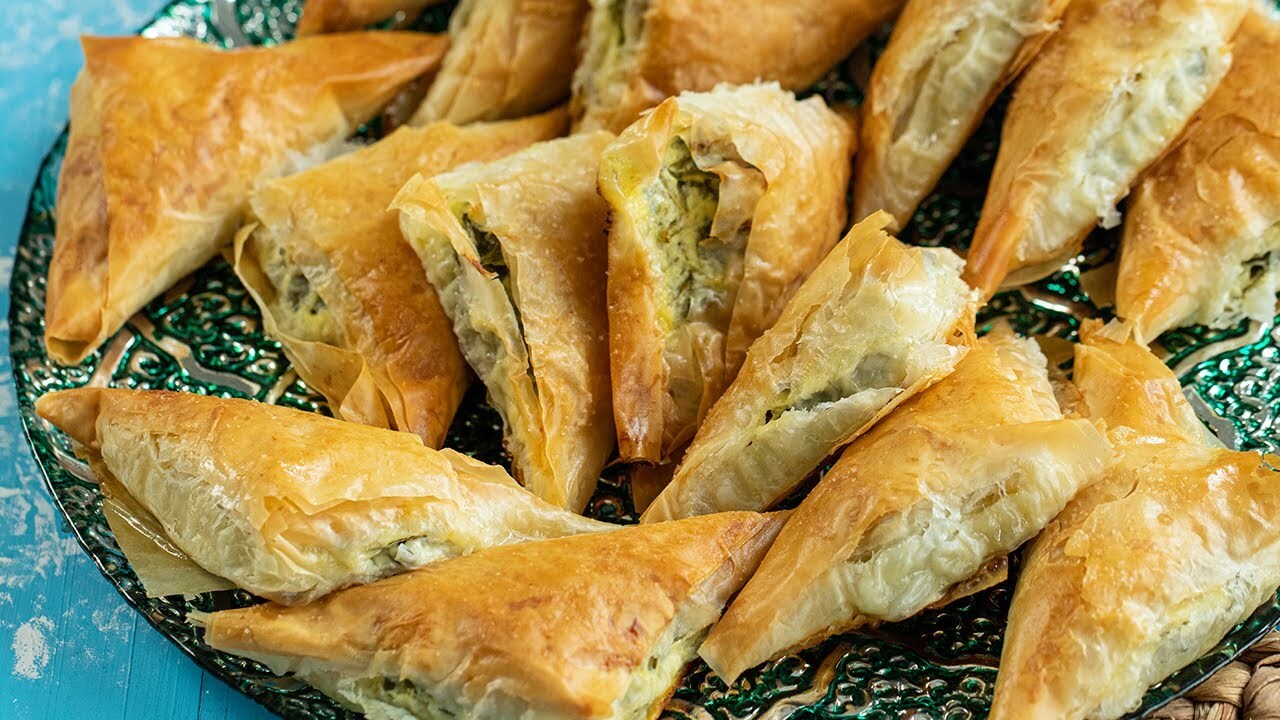
Assembling the Spanakopita triangles is an enjoyable part of the cooking process. Start by laying out a sheet of phyllo dough and brushing it lightly with melted butter or olive oil. Place another sheet on top and repeat the process until you have multiple layers.
Cut the layered phyllo dough into strips or squares, depending on your preferred triangle size. Spoon a portion of the filling onto each piece and fold them into triangles, sealing the edges with butter or oil.
6.Shaping The Spanakopita Triangles
Shaping the Spanakopita triangles is a creative step that gives the dish its distinctive appearance. Once you place the filling on the phyllo dough, fold one corner over the filling to form a triangle shape.
Continue folding the dough in a triangular fashion, creating neat and compact triangles. This process ensures that the filling remains secure within the layers of phyllo dough during baking. The shape also facilitates easy handling and serving.
7.Brushing The Spanakopita With Egg Wash For A Crispy Finish
To achieve a crispy and golden exterior, brushing the Spanakopita triangles with an egg wash is essential. In a small bowl, beat an egg with a splash of water until well combined. Using a pastry brush, lightly coat the top of each triangle with the egg wash.
This will create a beautiful sheen and help the phyllo dough turn golden brown during baking. The egg wash also adds a subtle richness to the overall flavor profile, enhancing the enjoyment of every crispy bite.
8.Baking The Spanakopita In The Oven
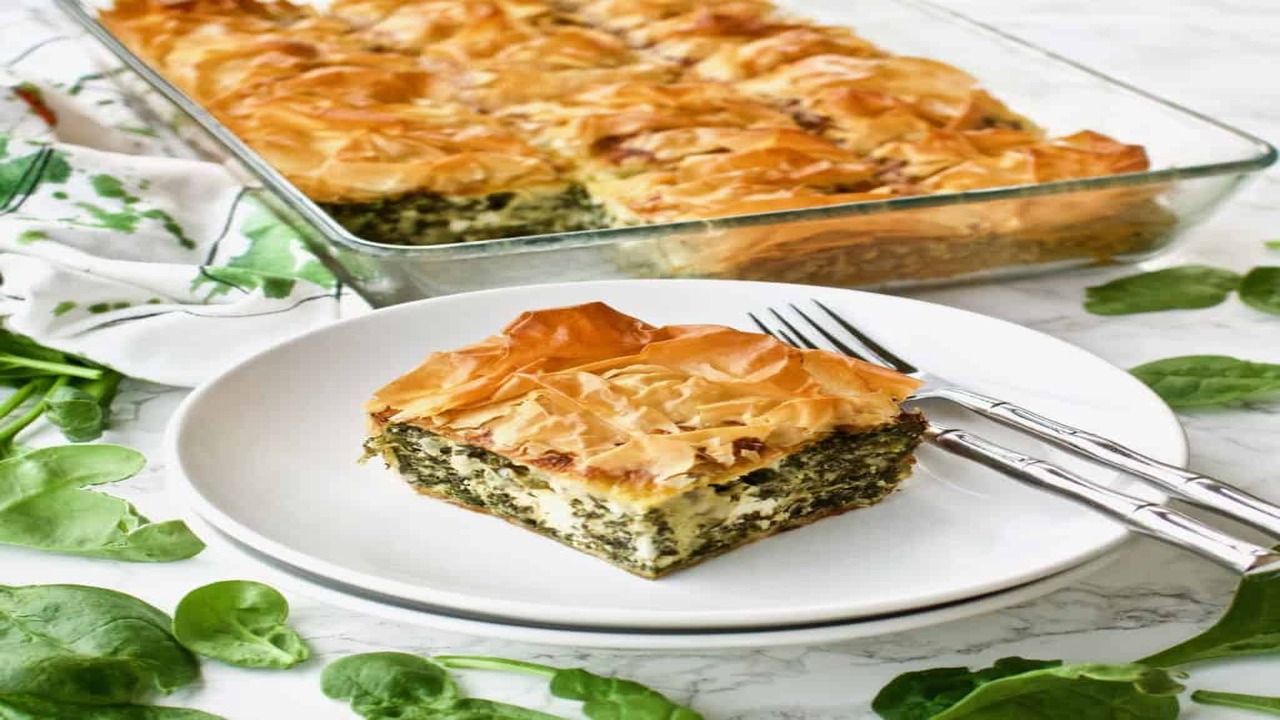
Baking is the final step in bringing the Spanakopita triangles to perfection. Preheat the oven to the recommended temperature, usually around 350°F (175°C). Place the assembled triangles on a baking sheet lined with parchment paper, leaving a small gap between each piece.
Bake for the specified time, typically around 20-25 minutes, or until the phyllo dough turns golden brown and crispy. The baking process cooks the filling through and makes the triangles irresistibly crunchy.
9.Knowing When The Spanakopita Is Done
Determining the doneness of Spanakopita is relatively straightforward. When ready, the triangles should have a golden brown color and a crispy texture. Carefully lift one triangle and check if it has fully cooked phyllo dough without any raw or doughy spots. Heat the filling until it melts the cheese and develops the flavors nicely. Once you meet these criteria, you can enjoy the Spanakopita.
10.Storing And Reheating Leftover Spanakopita
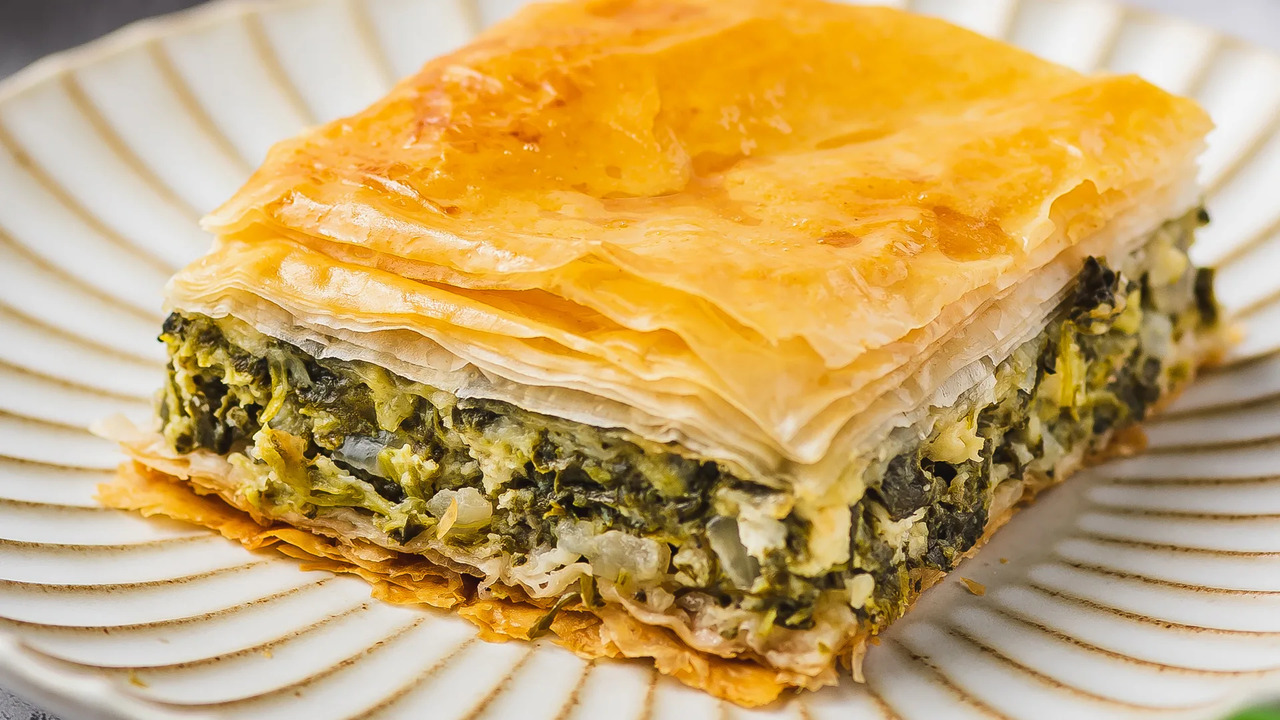
Proper storage is essential to maintain quality if you have any leftover Spanakopita. Allow the triangles to cool completely before placing them in an airtight container or wrapping them tightly with plastic wrap. Store in the refrigerator for up to three days.
To reheat, preheat the oven to 350°F (175°C), place the triangles on a baking sheet, and bake for about 10-15 minutes or until heated through. This ensures that the Spanakopita remains crispy and delicious, even when enjoyed as leftovers.
Final Thoughts
Learning how to make traditional Greek spanakopita is a culinary endeavor and an opportunity to embrace the rich history and vibrant flavors of Greek cuisine. The future feasibility of making this delectable dish is high, as the ingredients are easily accessible in most parts of the world, and the recipe can be adapted to suit various dietary preferences.
Understanding the importance of traditional Greek spanakopita goes beyond its delicious taste. It symbolizes the cultural heritage and culinary traditions passed down through generations.
The popularity of spanakopita continues to soar, attracting food enthusiasts and adventurous eaters from all corners of the globe. Its success lies in its simplicity and timeless appeal.
Whether served at family gatherings, Greek festivals, or upscale restaurants, spanakopita never fails to captivate with its irresistible aroma and heavenly taste. Let this savory delight transport you to the sun-kissed shores of Greece and bring a taste of the Mediterranean into your kitchen.
Frequently Asked Questions
1.How Do I Prepare The Phyllo Dough?
Ans: A: Thaw the phyllo dough according to the package instructions and keep it covered with a damp towel to prevent it from drying out.
2.How Long Does It Take To Bake The Spanakopita?
Ans: A: Bake the spanakopita in a preheated oven at 375°F for about 45 minutes or until golden brown.
3.Can I Make Spanakopita Ahead Of Time?
Ans: A: Yes, you can assemble the spanakopita ahead of time and refrigerate it until ready to bake.
4.Can I Freeze Spanakopita?
Ans: A: Yes, you can freeze spanakopita before or after baking it. To reheat, simply thaw and bake until heated through.
5.Can I Add Other Ingredients To The Spinach Filling?
Ans: A: Yes, you can customize the filling by adding ingredients such as chopped herbs, sun-dried tomatoes, or pine nuts to suit your taste.

I’m a writer and blogger who loves to talk about entertainment, culture, and relationships. I love to share my thoughts and insights on these topics, and I’m always looking for new ways to engage with my readers. I’m also a big fan of learning new things, so I’m always exploring new areas of interest.
